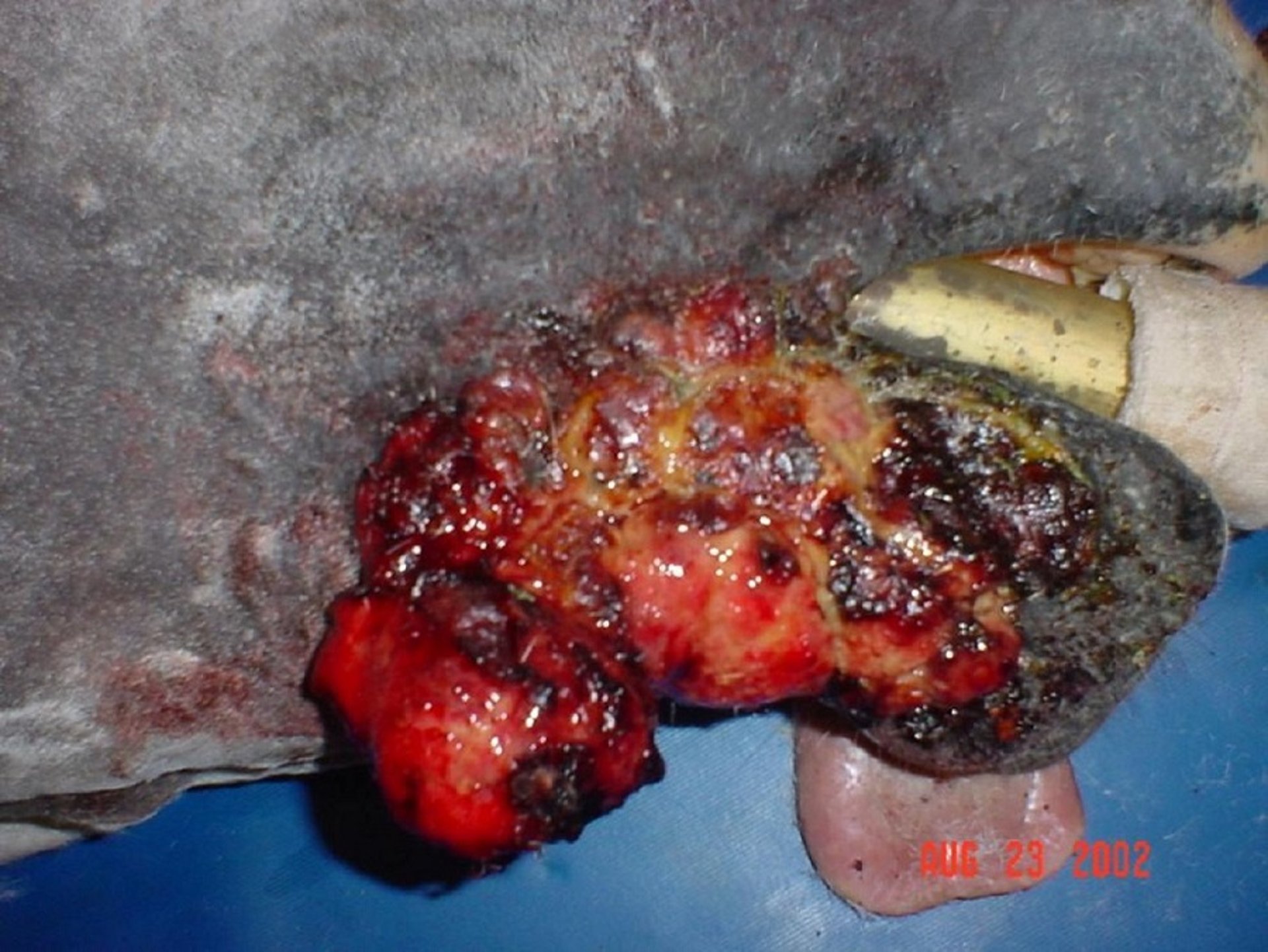Courtesy of Dr. Jan Hawkins.
Neoplasia of the mouth and lips other than viral papillomas are uncommon and include melanomas, sarcoids, and squamous cell carcinoma. In gray horses, melanomas may develop and infiltrate the commissures of the mouth and cause hard, thickened, tumorous plaques that may not be detected until well advanced. Verrucose, fibroblastic, and sessile or flat forms of equine sarcoid can involve the mouth and lips.
Carbon dioxide laser removal of oral and lip melanomas should be considered. Complete removal of oral and lip melanomas is not necessary for a successful outcome. In addition, some horses may respond to oral cimetidine therapy. Surgical resection of sarcoids can be performed successfully with the carbon dioxide laser. Along with laser resection, intratumoral administration of cisplatin can be considered to lessen the chances for recurrence. Cryosurgery is another acceptable method of treatment. Squamous cell carcinoma can be difficult to treat because of its invasive nature. Surgical debulking with the carbon dioxide laser followed by intratumoral injection of cisplatin can be effective in select cases. Regardless of treatment, the prognosis for complete resolution of oral squamous cell carcinoma is guarded to poor. (Also see Tumors of the Skin and Soft Tissues.)
